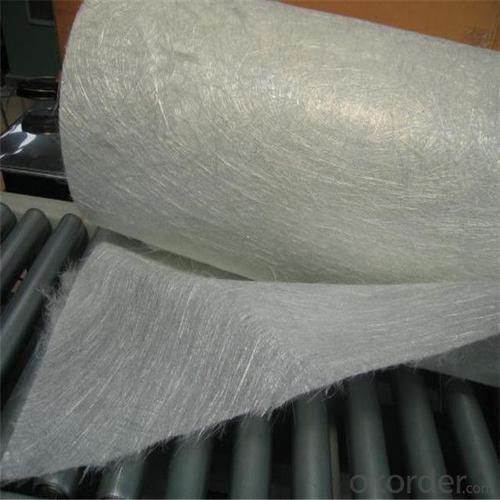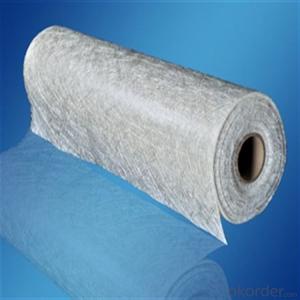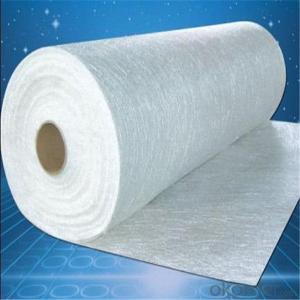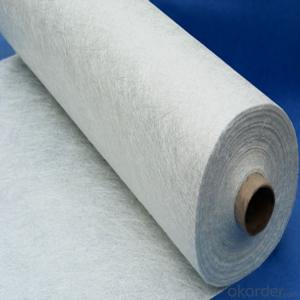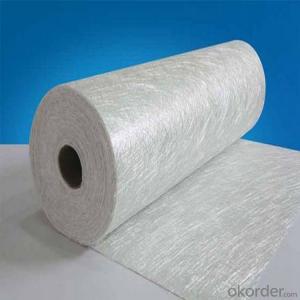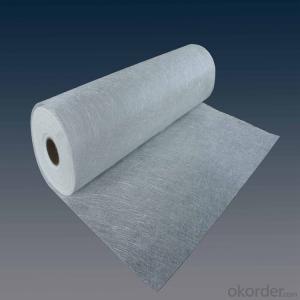Chop Strand Fiberglass for Epoxy Resin Easy Operation E-Glass Powder Chopped Stand Mats
- Loading Port:
- Tianjin
- Payment Terms:
- TT OR LC
- Min Order Qty:
- 100 m.t.
- Supply Capability:
- 20000 m.t./month
OKorder Service Pledge
OKorder Financial Service
You Might Also Like
Quick Details
| Technique: | Chopped Strand Fiberglass Mat (CSM) | Dimensions: | according to customer's request | Mat Type: | Stitch Bonding Chop Mat |
| Fiberglass Type: | E-Glass | Softness: | middle | Place of Origin: | Jiangxi, China (Mainland) |
| Brand Name: | cnbm | Model Number: | CSMEP100,CSMEP120,CSMEP200,etc | Product: | Cooling Tower Building Glass Fiber Fiberglass Chopped Strand Mat(csm) |
| Color: | White | Width: | 1040mm,1250mm,ect. | Area weight: | 225-900g/m2 |
| Application: | filament winding,panpel,ect |
Packaging & Delivery
| Packaging Details: | Each roll in one polybag then to an export carton. |
| Delivery Detail: | Within 18 days after confirm order |
Fiberglass Chopped strand mat
Powder Strand Mats Product Features:
1) Uniform density ensures consistent fiberglass content and mechanical properties of the composites products.
2)Uniform powder distribution ensures good mat integrity, little loose fibers and small roll diameter.
3) Excellent flexibility ensures good mold ability with no spring back at sharp angles.
4)Fast and consistent wet-out speed in resins and rapid air lease reduce resin consumption and production cost and enhances productivity and mechanical properties of the end products.
5)The composite products have high dry and wet tensile strength and good transparency.
Picture

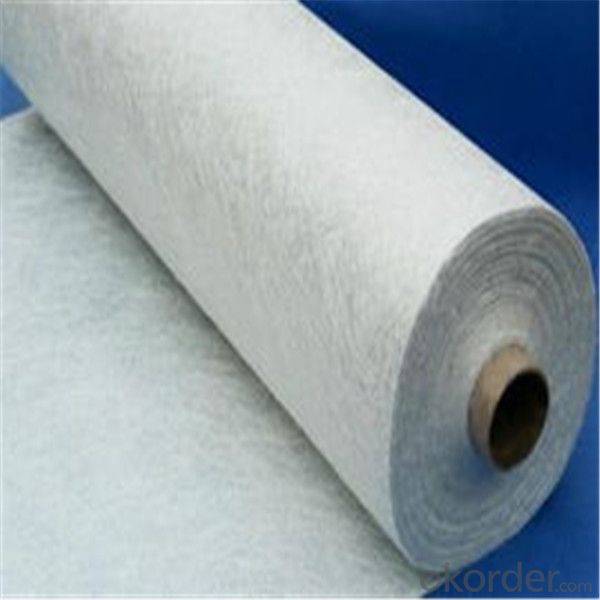



- Q: Can fiberglass chopped strand be used in electrical insulation?
- Yes, fiberglass chopped strand can be used in electrical insulation. Fiberglass is a non-conductive material, meaning it does not conduct electricity. As a result, it can be used as an insulating material to prevent the flow of electrical current. The chopped strand form of fiberglass is commonly used in the production of various electrical insulation components such as circuit boards, transformers, and electrical cables. It provides excellent insulation properties, high mechanical strength, and good thermal resistance, making it a suitable choice for electrical insulation applications. Additionally, fiberglass chopped strand is resistant to chemicals, moisture, and temperature fluctuations, further enhancing its suitability for electrical insulation purposes.
- Q: Can fiberglass chopped strand be used in medical applications?
- Yes, fiberglass chopped strand can be used in certain medical applications. It is commonly used as a reinforcing material in composites used for medical devices such as prosthetics, orthopedic implants, and surgical instruments. However, its specific use will depend on the requirements and regulations of each individual medical application.
- Q: What are the typical surface finishes available for fiberglass chopped strand?
- Some typical surface finishes available for fiberglass chopped strand include: 1. Silane: This surface finish is one of the most common options for fiberglass chopped strand. It consists of a thin layer of silane coupling agent applied to the surface of the chopped strands. Silane enhances the adhesion between the fiberglass and the resin matrix in composite applications. 2. Polyester: Polyester surface finishes are used to improve the compatibility of chopped strand with polyester resin systems. This finish helps to prevent fiber-to-fiber abrasion during processing and improves the interfacial adhesion between the fiberglass and the resin. 3. Epoxy: Epoxy surface finishes are specifically designed to enhance the bonding of chopped strand with epoxy resin systems. The epoxy coating provides good wet-out properties, improves the strength and stiffness of the composite, and offers excellent resistance to chemicals and environmental factors. 4. Polyurethane: Polyurethane surface finishes are used for applications where enhanced toughness and flexibility are required. This finish offers good adhesion to polyurethane resin systems and enhances the impact resistance of the composite. 5. Acrylic: Acrylic surface finishes are commonly used when transparency or aesthetics are important. This finish provides a clear coating on the chopped strand, allowing the fiberglass to maintain its natural appearance while providing improved compatibility with acrylic resin systems. It is important to note that the choice of surface finish depends on the specific application and resin system being used. Manufacturers often offer a range of surface finishes to cater to different requirements and compatibility needs.
- Q: How to mill glass into powder?
- Milled glass fiber is made from specially drawn continuous glass fiber by chopping, grinding and sieving.
- Q: What is the diameter of fiberglass chopped strand?
- The diameter of fiberglass chopped strand typically ranges from 10 to 20 micrometers.
- Q: How does the diameter of chopped strand affect its performance?
- The diameter of chopped strand can significantly affect its performance in various applications. A smaller diameter typically results in better dispersion and distribution within a matrix, leading to improved mechanical properties of the final composite material. This is because smaller diameter strands have a larger surface area, allowing for better adhesion between the fibers and the matrix material. Additionally, smaller diameter chopped strands can enhance the overall strength and stiffness of the composite material due to the increased number of fibers per unit volume. The smaller diameter also allows for a higher packing density, resulting in a more homogeneous mixture and reduced porosity. On the other hand, larger diameter chopped strands may offer advantages in certain applications. For instance, they can provide increased impact resistance and toughness, as the larger strands have more energy-absorbing capacity and can resist crack propagation more effectively. In summary, the diameter of chopped strand directly influences its performance in terms of dispersion, adhesion, strength, stiffness, impact resistance, and toughness. The selection of the appropriate diameter should be based on the specific requirements of the application to optimize the performance of the composite material.
- Q: Can fiberglass chopped strand be used in corrosive environments?
- When using fiberglass chopped strand in corrosive environments, it is important to consider the specific resin used in combination with it. Fiberglass itself has resistance to various corrosive substances, including saltwater, mild acids, and bases. However, the resistance to corrosion can vary depending on the resin used to bind the chopped strand. For instance, epoxy resin is highly resistant to corrosion and can withstand exposure to a wide range of chemicals and corrosive environments. It is commonly employed in applications that require fiberglass chopped strand to resist corrosion, such as the construction of chemical storage tanks, pipes, and industrial equipment. On the contrary, polyester resin is less resistant to corrosion and may not be suitable for highly corrosive environments. It can be used in less severe conditions, like the construction of swimming pools or automotive parts. To summarize, the use of fiberglass chopped strand in corrosive environments depends on the specific resin utilized. It is crucial to select a resin that is compatible with the corrosive substances present in the environment to ensure the longevity and performance of the fiberglass material. Seeking guidance from a materials engineer or a supplier specializing in fiberglass products can aid in determining the most suitable resin for a particular corrosive environment.
- Q: Can fiberglass chopped strand be used in the production of wind turbine nacelles?
- Fiberglass chopped strand is indeed applicable for the manufacturing of wind turbine nacelles. It is widely utilized as a reinforcement material during composite manufacturing procedures. The nacelle of a wind turbine is typically composed of a composite material, which encompasses a blend of fiberglass and resin. To enhance the mechanical properties and provide durability and strength to the nacelle, the fiberglass chopped strand is incorporated into the resin matrix. This inclusion improves the overall structural integrity and stability of the wind turbine nacelle, allowing it to withstand the demanding conditions and load requirements of wind turbine operation. Moreover, fiberglass chopped strand possesses the desirable qualities of being lightweight and corrosion-resistant, making it highly suitable for wind turbine applications. Consequently, it is a frequently employed material in the production process of wind turbine nacelles.
- Q: How is the interlaminar shear strength of fiberglass chopped strand composites determined?
- The interlaminar shear strength of fiberglass chopped strand composites is determined through a standardized testing method called the short beam shear (SBS) test. This test is specifically designed to measure the shear strength between layers of laminated composites. The SBS test involves fabricating a small beam specimen from the fiberglass chopped strand composite material. This specimen is typically rectangular in shape, with a specific width, thickness, and length. The width and thickness of the specimen are chosen based on the specific requirements of the material being tested. During the test, the specimen is placed on two supports, creating a span. A load is then applied at the midpoint of the span, causing the specimen to bend. This bending results in shear stresses within the composite material. By measuring the applied load and the resulting deflection, the interlaminar shear strength can be calculated using the principles of mechanics. The interlaminar shear strength is typically reported as the maximum shear stress the material can withstand before failure occurs. It is an important property to evaluate the integrity and performance of fiberglass chopped strand composites, as it determines the material's resistance to delamination or separation between layers. The SBS test is widely used in the industry for quality control, material selection, and research and development purposes. It provides valuable information on the interlaminar shear strength of fiberglass chopped strand composites, allowing engineers and manufacturers to make informed decisions regarding the suitability of the material for specific applications.
- Q: Make 0.3 mm glass fiber short cut. What kind of fiberglass yarn is good?
- Glass fiber short shred:Glass is a kind of brittle material known. Interestingly, once the glass is heated after being drawn into a much thinner than a human hair fiber glass, it seems completely forget their own nature, be like synthetic fiber as soft and tough, even more than the same thickness of the stainless steel wire!
Send your message to us
Chop Strand Fiberglass for Epoxy Resin Easy Operation E-Glass Powder Chopped Stand Mats
- Loading Port:
- Tianjin
- Payment Terms:
- TT OR LC
- Min Order Qty:
- 100 m.t.
- Supply Capability:
- 20000 m.t./month
OKorder Service Pledge
OKorder Financial Service
Similar products
Hot products
Hot Searches
Related keywords










